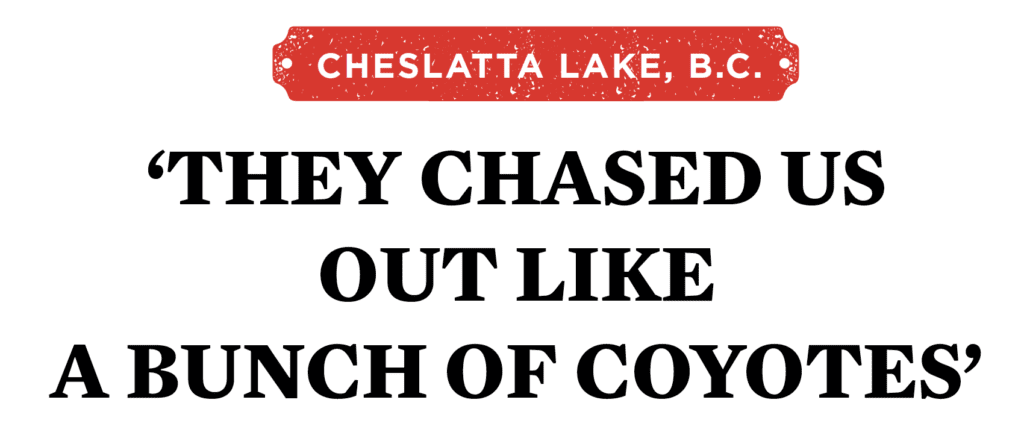
Each summer, the people of the Cheslatta Carrier Nation in British Columbia’s northern interior brace themselves for what the yearly floods might wash ashore. As the nearby waterways creep higher, they flood the community’s cemeteries, sweeping away the remains of their elders. It’s a painful reminder of the trauma wrought by hydroelectric development, which began in the region in the 1950s.
“That’s what we still deal with today, in 2019,” says Chief Corinna Leween. “We’re still collecting the remains of our people.”
You may unsubscribe from any of our newsletters at any time.
In 1950, the Aluminum Company of Canada (Alcan) started construction of a dam after being granted the rights to the Nechako River, which flows into Cheslatta Lake. The plan was to use the river to generate electricity for a new smelter in Kitimat. Two years later, after no consultation with the Cheslatta, Leween’s mother, grandmother and dozens of members of their community were forced out of their homes on the shore of Cheslatta Lake to make way for a massive hydroelectric reservoir that would flood their settlements. They were given less than two weeks’ notice that they were being evacuated; soon after the waters began to rise, the Cheslatta made the long walk out of their territory, leaving behind most of their possessions, along with cemeteries and countless other burial grounds.
“They chased us out like a bunch of coyotes,” elder Pat Edmund recalled in a local history compiled by Mike Robertson, a settler who moved to the area in the 1980s and has become one of the community’s biggest advocates and the Nation’s senior policy advisor.
The relocation was so traumatic for Leween’s mother that she barely spoke of it to her daughter. “She was a residential school survivor as well,” says Leween. “That part I heard about. But she didn’t really talk about being evicted — I think it was too emotional for her, and there was too much pain attached to it.”
Nearly seven decades later, Leween says the pain is still raw. Each summer, a spillway releases water from the reservoir into Cheslatta Lake, causing additional annual flooding that regularly floods the cemetery and washes more bodies into the water. “Cheslatta Lake has been designated a cemetery because of that — because so many of our ancestors are still unaccounted for in that water,” says Leween.
She remembers getting a call five years ago from a member of the community who found a pair of femur bones sticking up from the shore of the lake. The Cheslatta people brought in an archeologist to help dig them up, and the community affectionately referred to the remains as “Grandma Cheslatta.”
“It’s not her final resting place anymore,” says Leween. “We had to take her out, and we now have to build this big cairn so that we can start putting our elders away in pieces. We don’t even know who they are.”
Since the evacuation, the Cheslatta have been living on the land of the nearby Wet’suwet’en people. But each summer since 2005, depending on the flooding that season, a group of Cheslatta have returned to one of their townsites on the lake for a yearly camp-out. They build drums, pick berries, make birchbark baskets and tell stories. Leween says their time there is important for her community. “They say there’s something about that place that’s very spiritual. It’s very peaceful. It’s almost calling you home,” Leween says. “I know because I see the looks on their faces when we bring the youth back there. That’s how they feel, too.”
But the annual flooding prevents the Cheslatta from returning home permanently. For years, the community has been trying to negotiate with Rio Tinto, the England-based company that now owns Alcan, and different levels of government to find a solution.
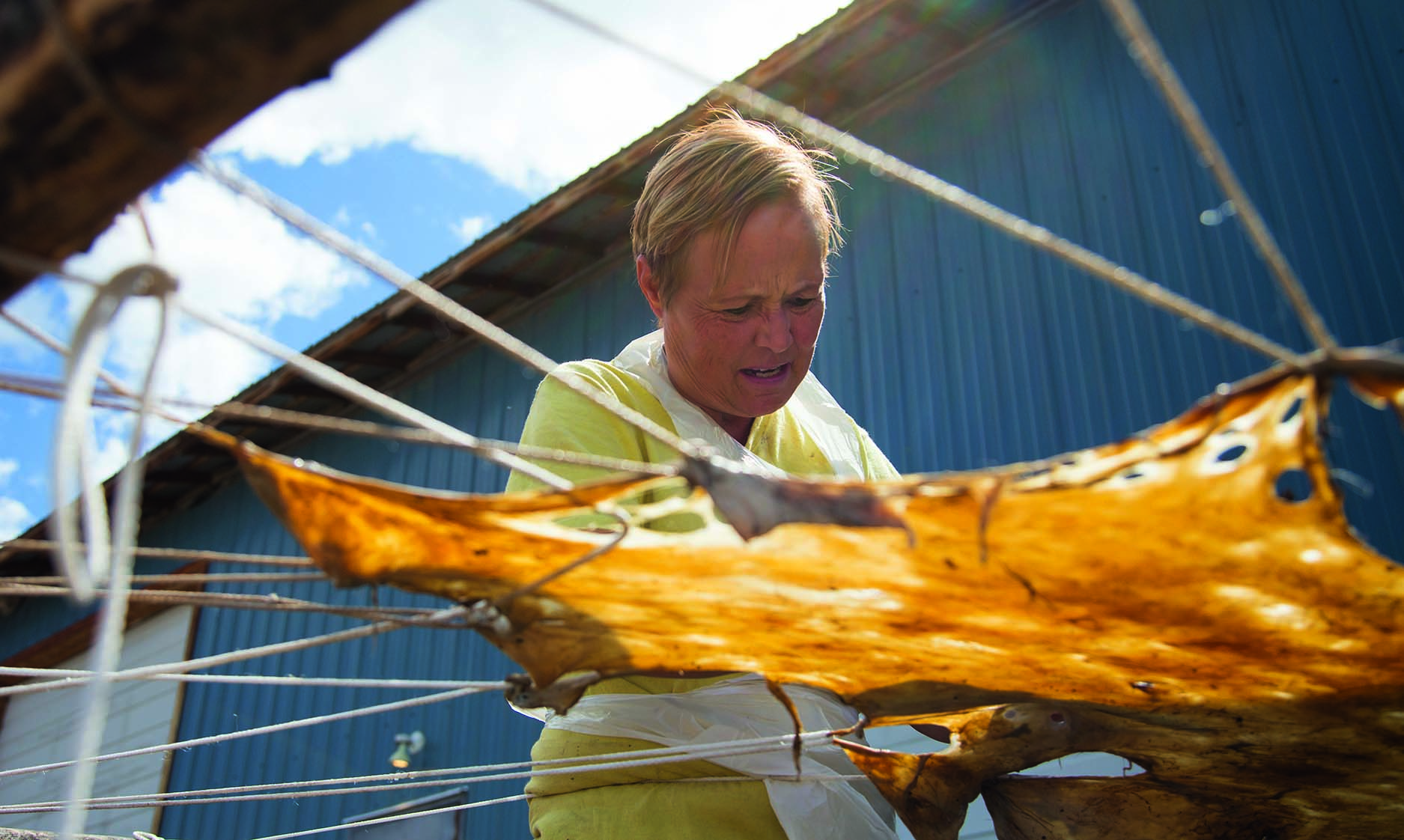
Despite years of little progress, Leween says recent breakthroughs, like a 2016 reconciliation agreement with the provincial government, have made her hopeful.
In 2012, after over a decade of discussion with the Cheslatta, Rio Tinto transferred nearly 5,000 hectares of land back to the Cheslatta, paving the way for their resettlement.
“The goal is to get the people back onto the land,” says Robertson, who was moved by the Cheslatta’s story after he came to the region. “They always say they’ve been in a refugee camp for 67 years. Now we’re trying to pick the locks of the camp and go back home.”
First, however, something must be done to address the annual surge of water. For many years, the community has been pushing for a spillway at the Kenney Dam, which would release water on the other side of Cheslatta Lake. Although no action has been taken for years, Robertson says the Nation, the B.C. government and Rio Tinto are now at the table trying to sort out a deal.
A spokesperson for Rio Tinto says, “We are continuing our discussions on a long-term agreement, known as New Day, that will bring ongoing growth and prosperity.” Robertson hopes this is a sign the company is “turning over a new leaf” with the Cheslatta people. “Rio Tinto is one of the biggest corporations in the world, and they’re used to being bullies,” he says. “But that’s starting to be pretty hard to tolerate in 2019. The old ways of taking and never giving back are over.”
Yet, when Robertson looks to current hydro projects being developed in the province, he acknowledges that problems remain with the ways First Nations are involved in development. In reference to the Site C dam, a massive hydroelectric project on the Peace River, he accuses BC Hydro of being “tokenistic” with its consultation and involvement of communities. (BC Hydro maintains that it has undertaken “extensive and meaningful consultation and engagement with First Nations about Site C since 2007.” A spokesperson for the company said it “will continue to work with Indigenous nations to address their concerns and identify opportunities for them to benefit from the project.”)
In January, the United Nations instructed Canada to suspend construction of the Site C dam until the “free, prior and informed consent” of Indigenous communities affected by the project had been obtained. Months before the UN recommendation, the chief of the West Moberly First Nations had said the dam project would amount to a “cultural genocide.” Indeed, BC Hydro has reportedly said it would clear-cut and bulldoze 13 areas of cultural importance for the community to make way for the development, and there are concerns the Site C dam would flood First Nations burial sites.
For Leween and other members of the Cheslatta Carrier First Nation, it’s an all-too-familiar story. Almost 70 years after a hydroelectric project came to their community, they’re still trying to recover their homeland. “It’s important to get our people back home so they have a place they can call their own,” says Leween. “It’s not somebody else’s territory — it’s where their ancestors walked. It’ll always be home. It just has that feeling to it.”
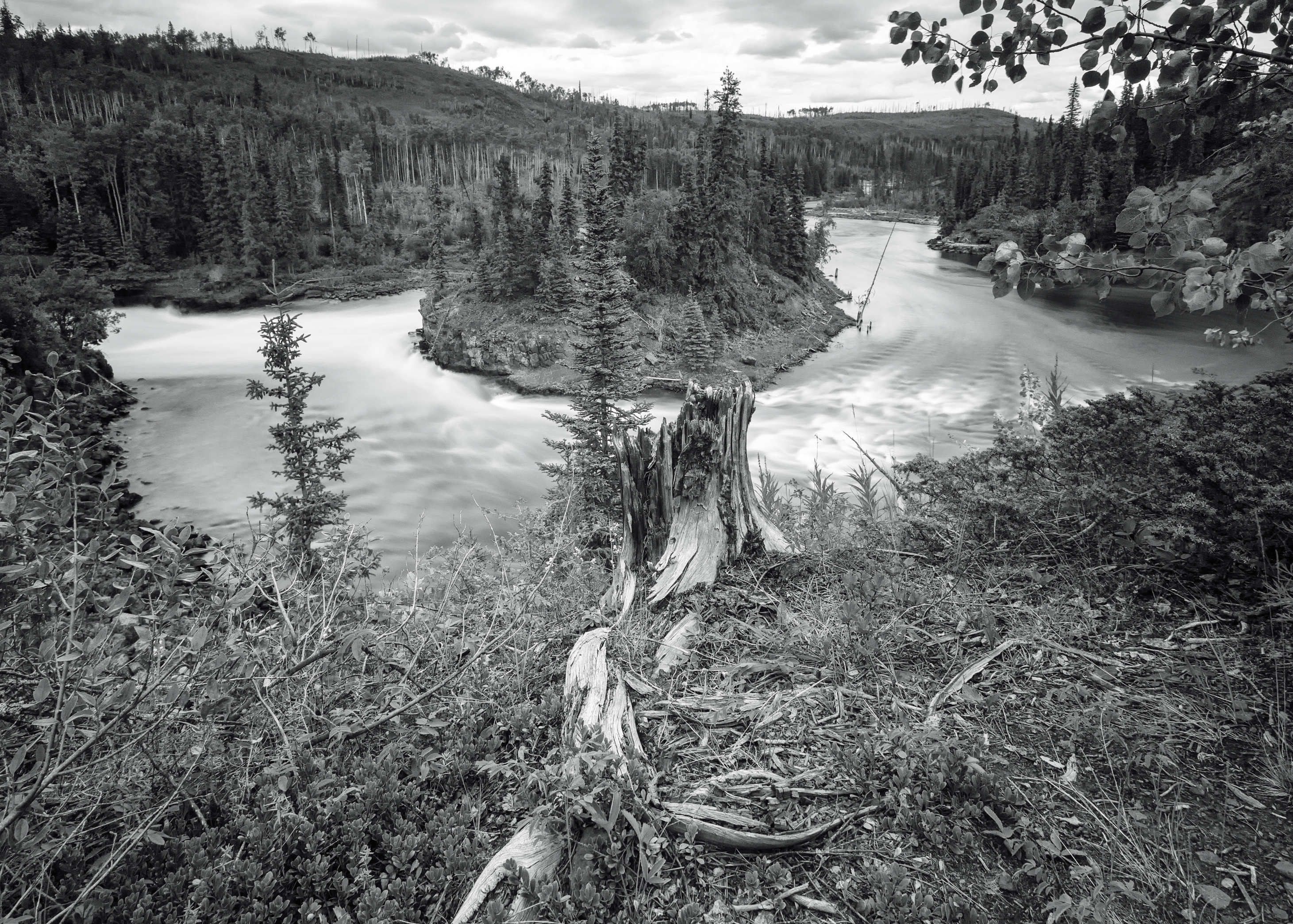

When Ellen Cook shares stories about her life on the Misipawistik Cree Nation, she speaks in terms of “before” and “after.”
Before hydroelectric development came to her community in northern Manitoba, Cook spent her entire summers out on the land, picking berries and hunting to prepare for the winter. The waters were so clean and clear she could see straight to the bottom, and the river near her home churned with a series of rapids that gave the town its English name of Grand Rapids. Cook calls the time before Mino-Bimaadiziwin, which means “the good life.”
After hydro, everything changed. In 1960, Manitoba Hydro began building a dam on the rapids — one of the first major hydro projects in the province’s north. It took eight years to complete and flooded more than 1,000 square kilometres of land, including ancient burial grounds and the nearby community of Chemawawin. Residents were relocated to the town of Easterville, “some of them kicking and screaming,” says Cook, whose Misipawistik community also lived near the Grand Rapids Generating Station. Now, “our own children grieve, but they don’t know what they’re grieving for,” she says. “They hear us talking about how beautiful the land was, how beautiful the rivers were, how the rapids lulled us to sleep at night.”
As co-chair of the Interchurch Council on Hydropower, Cook has spent the better part of the last two decades educating people about the impacts of hydro development in Manitoba’s north. “My job down south has been to make people aware that, when they turn the light on in their house, they’re entering into an economic partnership with the people up north,” says Cook, a Cree knowledge keeper. “They have to know what the effects of that partnership are. It’s not an innocent, clean-energy kind of partnership.”
Grand Rapids Mayor Robert Buck remembers how thousands of hydro workers from the south moved in to the community seemingly overnight. He remembers watching workers bulldoze his aunt’s home to make room for a dock. At the time, his aunt was having surgery in Winnipeg; when she came home, her furniture was at the edge of the yard and her house was gone. “When they stopped the rapids,” Buck says, “they tore the spirit of the community right out.”
In its place came sickness and addiction. “We didn’t know these things when we were growing up,” says Cook. “We didn’t have gambling. We didn’t have alcohol. We didn’t have child and family services or the police.”
The connection between hydro development and substance abuse is repeated by others who grew up in hydro-affected communities. Clara McLeod of the Fox Lake Cree Nation — where Manitoba Hydro built a series of dams along the Nelson River — was one of many people who appeared before the province’s Clean Environment Commission last year to detail the impacts of hydro development. “Our people turned to alcohol because of the pain they endured growing up,” McLeod told the commission. “We lost our culture and, most importantly, we lost the self-sufficiency we once had.”
“My job down south has been to make people aware that, when they turn the light on in their house, they’re entering into an economic partnership with the people up north. They have to know what the effects of that partnership are.”
Ellen Cook
When the commission released its final report in May, it echoed the concerns of McLeod and Cook about the environmental and social impacts of hydro. But it also detailed allegations of sexual abuse and racism by Manitoba Hydro employees and contract workers in Fox Lake. Those allegations shocked many Manitobans and prompted an outside investigation.
(For its part, Manitoba Hydro told Broadview via its media relations officer, Bruce Owen, that it recognizes the impact hydro development has had in Indigenous communities. “We also recognize that resolving past grievances is fundamental to strengthening our relationship with Indigenous communities,” Owen wrote in an email.)
The Interchurch Council, initially called the Interchurch Task Force on Northern Flooding, was created in 1973 after a group of northern communities realized their grievances weren’t being heard by Manitoba Hydro and the provincial government. Cook says they turned to local churches to advocate on their behalf, who in turn contacted church leaders in Winnipeg. “It has to be the churches,” says Cook’s sister Stella Neff, a fellow educator and hydro critic. “The other organizations are so scared of Manitoba Hydro and of politicians because their funding will be cut.”
In the mid-1970s, the task force initiated a series of hearings for several affected communities. In 1976, a report was published based on the hearings in Winnipeg and Nelson House, one of the centres for the Nisichawayasihk Cree Nation, located on Footprint Lake about 75 kilometres west of Thompson. The report shows that, right from the beginning, members of northern communities were concerned that flooding from hydro development would permanently damage the environment, destroy their traplines and violate their treaty rights.
Derek Eidse, the council’s other co-chair, credits the task force’s early work with helping bring about the Northern Flood Agreement, which was signed between Manitoba Hydro, the provincial government and five First Nations communities in 1977 in an effort to compensate those communities for damages to their land. But Eidse admits that, even after decades of advocating on behalf of these communities, hydro remains a “blind spot” for many Manitobans — including many environmentalists and progressives — because of the perception that it’s a greener alternative to oil and natural gas.
Indeed, it’s getting harder and harder to capture the public’s attention. Eidse was gratified to see renewed interest in the issue after the Fox Lake report and abuse allegations. But he says it was “sadly short-lived,” in part because many of the women involved didn’t want to discuss it further.
“We were kind of at a loss for what to do in terms of advocating,” says Cook. Since then, she’s had the idea to organize a group of women from hydro-affected communities in the north to paddle through the areas that have been flooded by hydro projects. Cook and her sister Neff both describe it as a “healing journey.”
“The land has to heal; the water has to heal; and we have to return some of our ceremony, our culture, our medicine,” Neff says. “We have to return that to the people.”

Roger Orr has watched the world around him turn upside down. Where the river once froze, now the water runs rapid during the winter. Where geese once fed on eel-grass in the bay, now the grass is gone, and the geese along with it. There are concerns about higher levels of mercury that have affected the region’s fishery, and traplines have been flooded to make way for massive reservoirs.
Orr lives in the Cree Nation of Chisasibi, near the mouth of La Grande Rivière in northern Quebec. In the 1970s, the province began building a series of dams along the river, part of the first phase of the James Bay Project that created one of the largest hydroelectric systems in the world — and catapulted the Chisasibi into a strange new reality.
Orr’s community felt the effects of the project almost immediately. Back then, it was located on the island of Fort George, in the mouth of the river. But as other rivers were diverted upstream into La Grande, the increased flow threatened to erode the island, and in 1980 the community voted to relocate to the mainland.
“We had a great sense of freedom and happiness,” Orr says about life on Fort George. “A lot of us who were raised there during our childhood days and then moved — we long for that feeling again.”
The years after the announcement of the James Bay Project in the early 1970s were some of the most important in recent history for Indigenous communities in northern Quebec. The Grand Council of the Crees, a political body representing roughly 18,000 Cree in a territory known as Eeyou Istchee, was created in 1974. A year later, the Grand Council — along with the Inuit of Nunavik, the Government of Canada, the Province of Quebec and Hydro-Québec — signed the James Bay and Northern Quebec Agreement. The landmark land-claim settlement guaranteed the Crees of Quebec the right to self-government and defined the rules for hydro development on their territories.
These projects have also stoked fierce debate among Cree communities, however. On one side are those who believe it’s best to work with Hydro-Québec; on the other are those critical of compensation packages from the government and who oppose future hydro development in the territory. That debate came to a head in the early 2000s, when the Grand Council and Hydro-Québec signed the controversial Paix des Braves agreement. The agreement gave the Cree more autonomy in exchange for further hydro development. In the end, eight of the nine communities voted in favour of the agreement. The only community to vote against it was Chisasibi.
Orr believes his community was opposed to Paix des Braves because Chisasibi bore the brunt of the environmental and social impacts of the James Bay Project. Seeing their lands flooded to create hydro reservoirs — thereby destroying their traplines and hunting grounds forever — had a profound impact on elders in the community, according to Larry House, another Chisasibi resident who shares some of Orr’s concerns.
“I don’t know if elders could conceive of the damage that would be done,” says House. “The stress on them of seeing our way of life totally disregarded — that adds to the ailments.”
House also says there’s a lot of anxiety in the community about the possibility of a dam breach. Chisasibi is only about 20 kilometres downstream from the closest dam on La Grande Rivière, and just last fall there was a false alarm that sent the community into a panic as people scrambled to figure out what to do. “The stress is there constantly,” he says. “It’s like living on the edge of a razor.”
That stress has contributed to the fallout from other intergenerational traumas, such as those associated with residential schools. House knows first-hand what it’s like living with that kind of trauma and how those affected by it cope. House’s parents were both residential school survivors, and both were alcoholics. In his youth, he also turned to alcohol and drugs.
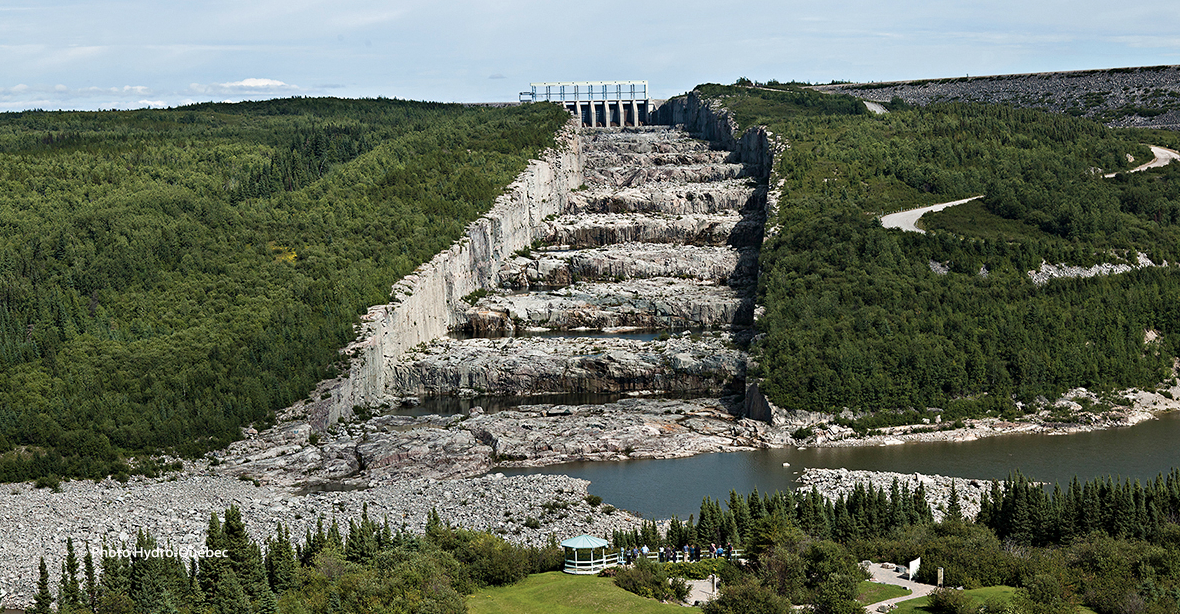
The turning point for House was the time he spent on the land with an elder from Chisasibi. “They told me my creation story. They told me who all my heroes are,” he says. “I started spending more time out there. Not having grown up in that environment, it kind of brought this sense of identity over me.”
Now, House and his uncle run land-based retreats for people in the community, to help them heal from the various traumas they’ve experienced.
But not everyone in Chisasibi feels the same as Orr and House when it comes to hydro development. “I always try to look at the positive side of things, while acknowledging the negative sides,” says Violet Pachanos, the former chief of Chisasibi and former deputy grand chief of the Grand Council of the Crees.
Pachanos acknowledges that losing land to make way for reservoirs, along with the changes in animal migration patterns, has hindered the way people in her community hunt and trap. But the agreements with hydro, she says, have also allowed her people to become more independent.
“The Cree have evolved from being hunters and trappers and gatherers to deciding their own destiny and actually governing themselves,” says Pachanos. “We don’t have much to do with Indian Affairs. We have our own governance and legislation that we work with.”
It’s also a misunderstanding that the Cree leadership has “accepted” hydro development in their territories, she says — a sentiment echoed by John Paul Murdoch, a negotiator for the Grand Council of the Crees. He insists there are no “yes” and “no” camps on the issue of hydroelectric development among the Crees. “There’s no human being who’s that black-and-white about anything in life,” he says. “Inside all of us, there’s a part that really hates this, and there’s part that’s like, ‘OK, let’s see what we can do with this.’”
Today, both Hydro-Québec and Murdoch say there’s a positive relationship between the company and the Grand Council. They both point to agreements signed since the Paix des Braves to increase the Cree Nation’s autonomy, and to ensure compensation from federal and provincial levels of government as evidence.
“The way of working with the Cree Nation is really about reaching a consensus,” says Luc Duquette, an Indigenous relations adviser with Hydro-Québec. “We avoid litigation. We have forums to deal with the issues that arise from time to time.”
The company says its relationship with the Cree Nation has informed how it proceeds with development in the territories of other Indigenous communities in the province. The Crown corporation is now building a major hydro development on the Rivière Romaine in eastern Quebec, in the territory of the Innu Nation. The project joins a number of high-profile, high-budget developments across the country, including the Site C dam in British Columbia, the Keeyask dam in northern Manitoba and the Muskrat Falls project in Labrador.
Reflecting on the impacts of hydro development on his community, House wonders if there can ever be an equitable arrangement between Indigenous communities and development. “There is a change in consciousness happening,” he adds, as if in answer to his own question. “More and more people are becoming aware of the problems.”
This story first appeared in the May 2019 issue of Broadview with the title “The high cost of electricity.” For more of Broadview’s award-winning content, subscribe to the magazine today.

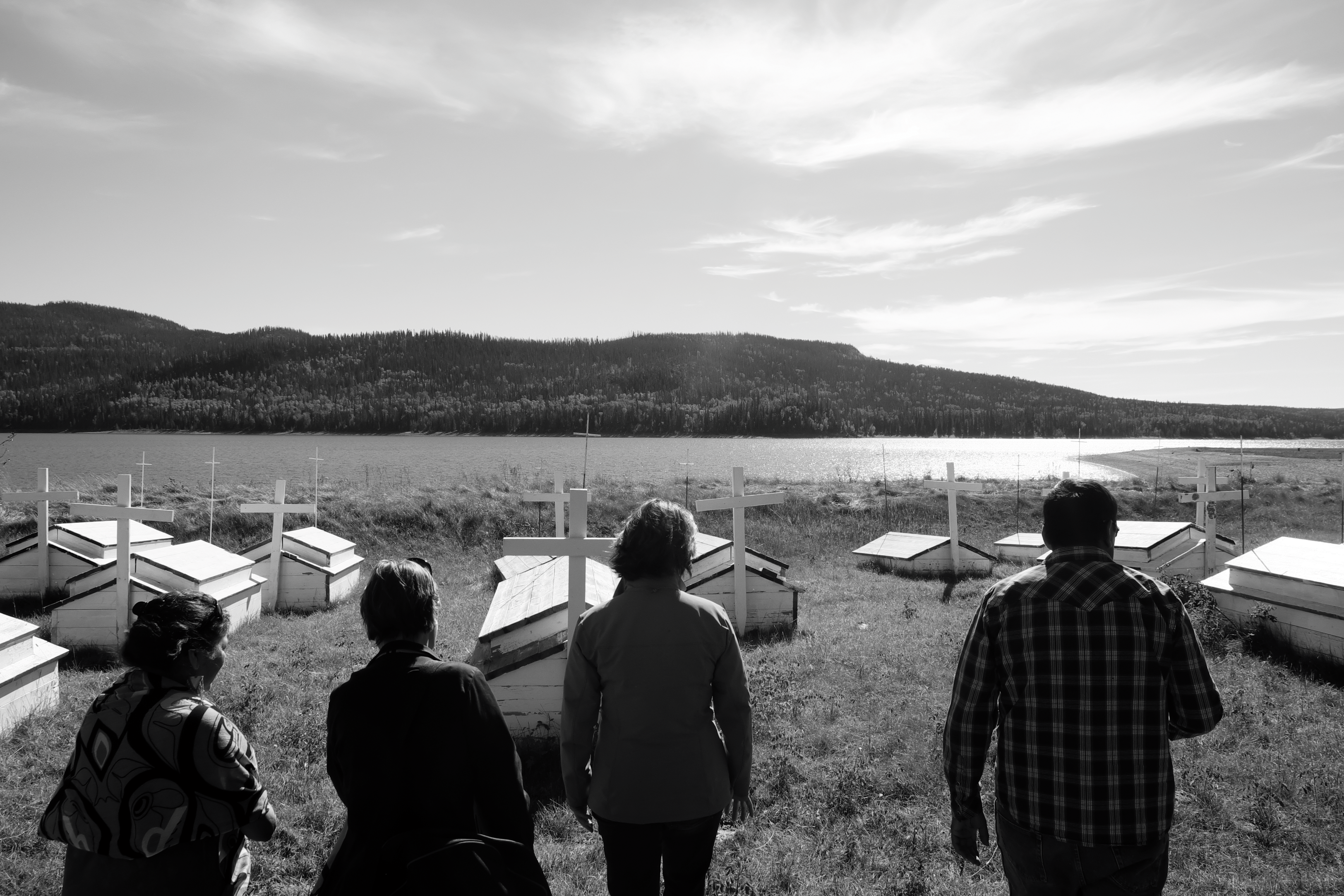













Thank you for this history lesson, as sad as it is. Reconciliation will happen as soon as we human beings understand our actions cannot allow us to let others be expendable.